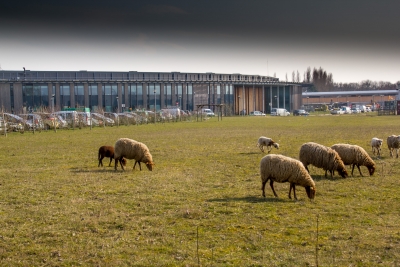From November 30th to December 11th, Paris hosts the twenty first conference of the parties on climate, COP21. For two weeks, political meetings and public engagement events will take place regarding environment, global warming and worldwide commitment needed. SOLEIL contributes to bring knowledge and answers to those environmental questions, not only through external users but also thanks to internal research. Without being exhaustive, here are some examples of this work.
Several beamlines are dedicated to or regularly work in climate studies. For instance on proxies, which are natural archives of past or current environmental changes. Those climatic indicators can be marine organism skeletons or shells, or biominerals studied by combined X-ray spectroscopy and microscopy on the LUCIA beamline or by X-ray photoemission spectroscopy on TEMPO. Fishes otoliths also represent sensitive witnesses of environmental fluctuations, as shown by X-ray diffraction, absorption and fluorescence at DIFFABS. Moreover, some works on chemical speciation of mineral dust from Africa (EXAFS and XANES studies on SAMBA) or exotic trees dating (X-ray fluorescence at DIFFABS) feed data basis essential for both understanding and governance of our environment. The poster created for the conference “Objectif Climat”, organized on November 12th by the Universite Paris Saclay, highlights those studies and is available online.

Pollution is also one central theme at SOLEIL, whether it is radioactive (see the example on MARS beamline with radionuclides in seawater) or due to heavy metals; their fixation by plants is being studies at the DIFFABS and LUCIA beamlines, in order to better understand and improve phytoremediation phenomena.
Energetic transition being at stake, it is also paramount to develop new alternatives for energy. The SAMBA and ROCK beamlines are particularly engaged and specialized in this area, with their studies on catalysis and batteries. Besides, a new PhD thesis just began on CRISTAL, in order to study the structure of abundant and non-pollutant materials (Cu2ZnSnS4) which could be use as absorbers in photovoltaic cells and from which we try to improve the conversion efficiency of solar photons. On the meantime, DESIRS already hosted a German team working on the improvement of engine performances to reduce their pollution. The SixS beamline also acquired this year a reaction chamber to follow, by diffraction and scattering at grazing incidence (GIXRD & GISAXS), in operando catalysis reactions involving nanoparticles at ambient or high pressure.

Alongside the researches, SOLEIL also developed several responsible actions, for instance by working with the Essonne Chamber of Commerce and Industry (CCI) and the cluster Advancity on the Smart Building Paris IDF project. SOLEIL accepted to be its demonstrator. Energetic data is being collected by SMEs for analysis. Those SMEs then proposed sources of improvements through specific equipment. On a different note, pasture is part of our synchrotron since 2011, thanks to the partnership with the pedagogical farm Bel-Air in Villiers le Bâcle.
